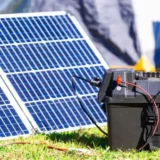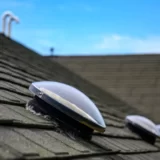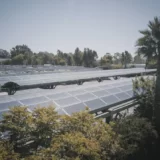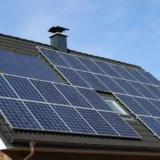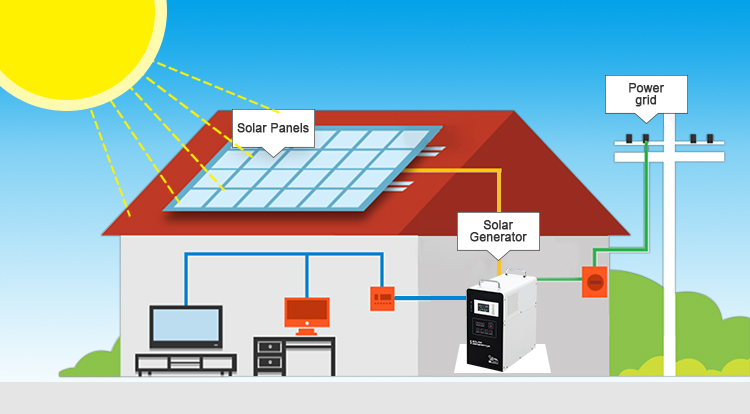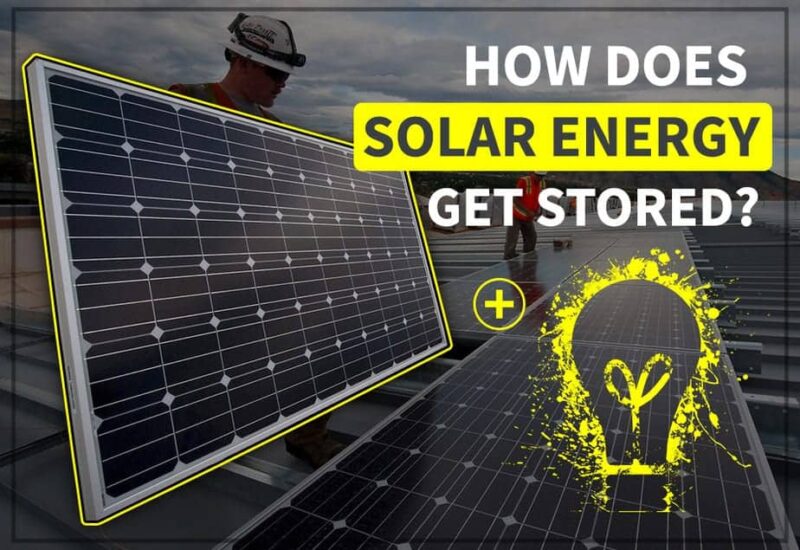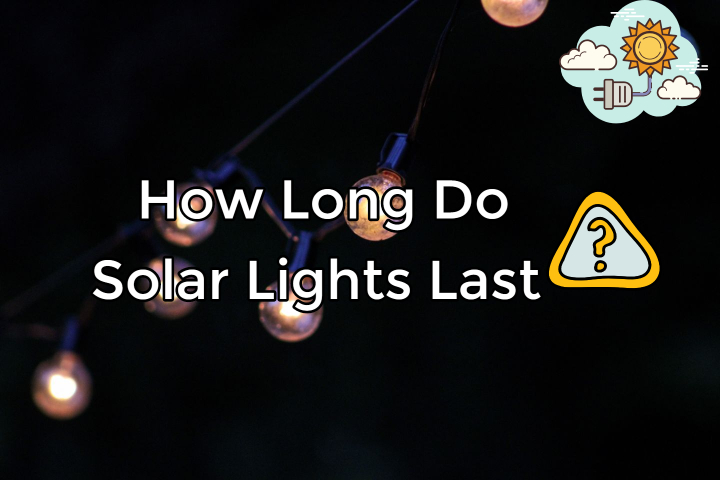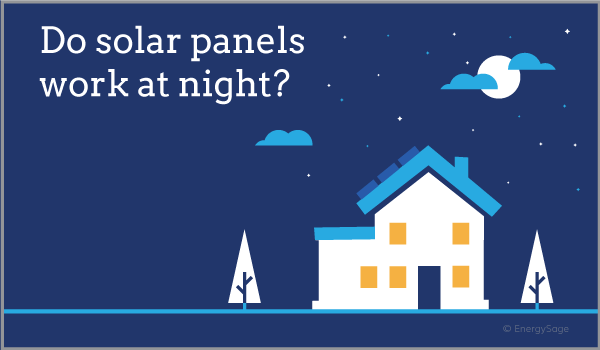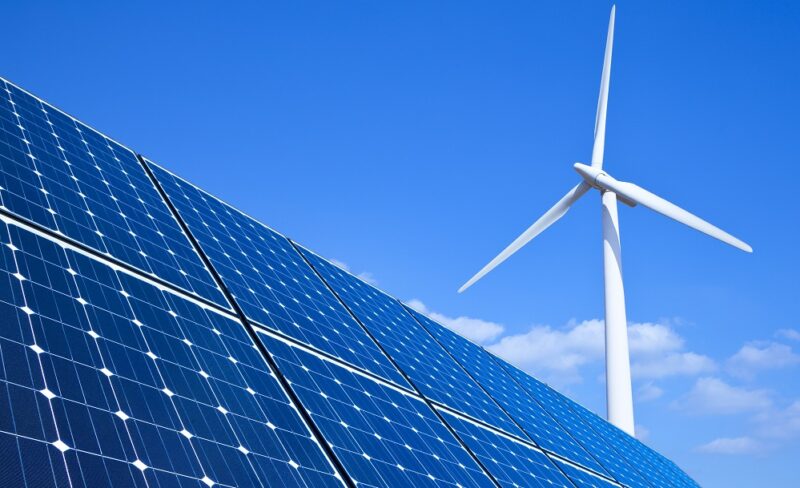Both indoor and outdoor spaces are frequently illuminated with solar lights. If you can’t get any direct sunlight, what happens? Can you charge solar lights with a flashlight?
Yes, you can – artificial light (eg flashlight) is capable of charging your solar lights. The brightness of the flashlight affects how quickly the solar light charges.
Let’s look into it and find out.
Table of Contents
Can You Charge a Solar Light With Flashlight?
Yes, a flashlight can charge a solar light. But the flashlight needs to produce the correct and stable intensity and spectrum of light that is required to charge solar light.
Typically most solar lights want an intensity of a minimum of 50 lux for effective charging as well as a wavelength of 400 to 700 nm spectrum range.
Additionally, since it will take several hours for the solar lights to fully charge, the battery life of the flashlight is even more crucial.
The main issue with the flashlight-based charging method is that it takes a long time to fully charge your solar lights. The efficiency of artificial solar light is significantly lower than that of sunlight.
These images from my experiment clearly show how current generation rates under artificial light and sunlight differ.
In contrast to the flashlight, which produces only 0.7 mA or almost 1 mA of current, direct sunlight generates 64.21 mA.
Read More: Do Solar Lights Still Charge On Cloudy Days?
How Can You Charge Solar Lights Using a Flashlight?

Here, I’ll just go over the procedures for solar light charging using a flashlight.
These devices can be set up without any technical expertise.
Just thoroughly read the steps explained below. Only a solar light and a flashlight are required.
- The first step is to locate an external light source that is stronger than the light produced by a standard torch, portable flashlight, or stage light. A good option is a flood light.
- Then, mount or position your solar lights nearer to your artificial light source. Closer the better.
- Charge the solar light for at least four hours. It will then be sufficient.
Related Post: How Long Do Solar Lights Take to Charge?
Pros and Cons of Charging Solar Lights Using a Flashlight
Pros
- Sometimes you can’t access direct sunlight. in that situation, the external flashlight is an excellent method of charging a solar light indoors and keeping them alive, especially in winter.
Cons
- Flashlight charging is not an excellent option for charging solar lights due to the higher energy loss in the external light.
- The primary limitation on flashlight charging is time. To ensure better performance, you must wait a long time for your solar lights to fully recharge.
- You can’t use every type of flashlight for charging solar lights. The solar lights must be charged using some particular spectrums and intensities.
Tips to Charge Your Solar Lights Efficiently
Solar lights should be used when there is less sunlight to avoid draining the battery. When the battery is drained frequently, it reduces the lifespan of your solar lights.
To curb that issue, we will give you three tips you can use to charge your solar lights efficiently.
Keep the 540W Solar Panel Clean
Clean the solar panel frequently to ensure that sunlight reaches the photovoltaic cells. The most frequent obstructions to the solar panel are debris and dust.
- The sensor is exposed thanks to a spotless solar panel. The bulb will remain on even during the day if the sensor is obstructed by dirt. This uses up the battery and prolongs its duration during the night.
- Apply clean water to a microfiber cloth before using it. Or use a liquid that cannot cause streaking. Avoid using detergents at all costs.
Direct the Solar Panel Toward the Sun
When pointed at the sun, solar lights’ batteries recharge.
- Place big mirrors around the panels at an angle if there isn’t enough solar energy in your area. When the sun is in any position, this will reflect all of the solar energy toward the panel.
The mirrors should be a bit larger than the panel to direct more sunlight.
- On occasion, trees and shadows prevent the sun from shining on the solar panel. Transfer the solar panel to a free area if that is the case.
Switch Off the Solar Lights for 72 Hours for Complete Charging.
When the sun is not enough, the battery will not charge fully. Even though the battery is not fully charged, the bulbs will still turn on when the sun detects darkness at night.
Turn off the solar lights for three days while the battery is charging to avoid damaging it from repeated drains.
Types of External Light Sources You Can Use for Solar Light Charging
Hand- Crank Flashlights

The flashlights were powered by a hand crank, and electricity was generated using a dynamo. By turning the crank, you can quickly recharge them. Additionally, you can recharge your solar lights with the help of these flashlights.
Hybrid Flashlights
Additionally a great choice for charging your solar lights are hybrid flashlights. Because the combination of solar panels and hand-crank improve the efficiency and facilitate recharge with either method.
Rechargeable Flashlights
There is a battery inside of these flashlights, which you can recharge once more and use. It can be charged by attaching a USB cable to it. Use it as your external light source after that.
Final Thoughts: Can You Charge Solar Lights With a Flashlight
Now that you know, you can use solar energy, which is one of the most efficient forms of energy available. Nevertheless, you have the option to be inventive when it comes to charging.
If you don’t have access to direct sunlight, charging your flashlight can be very helpful.
However, remember that a flashlight won’t work at its best.
Related Reading: How To Charge Solar Lights Without Sun?
FAQs
Can You Charge Solar Lights Inside?
For lightweight solar lights, you can definitely bring them indoors to charge.
Do Solar Lights Need Sun Or Just Light to Charge?
No, solar lights do not require direct sunlight to charge.
Do Solar Lights Charge on Rainy Days?
Although direct sunlight is key to charging solar panels, they continue to charge even on cloudy, overcast days.
Why Do Outdoor Solar Lights Stop Working?
Solar lights require sunlight to operate, so if they are not receiving enough of it they will not function. Therefore, to ensure that your solar light operates as intended, make sure that it is installed or placed in a location where it receives enough sunlight to charge its battery.


